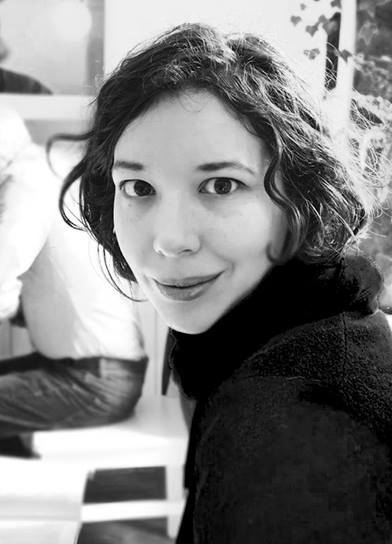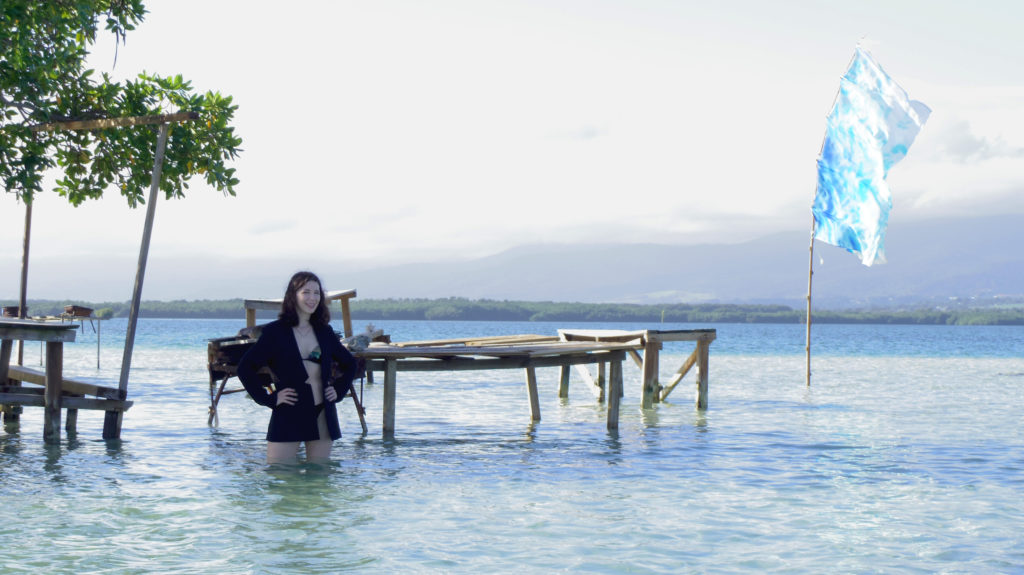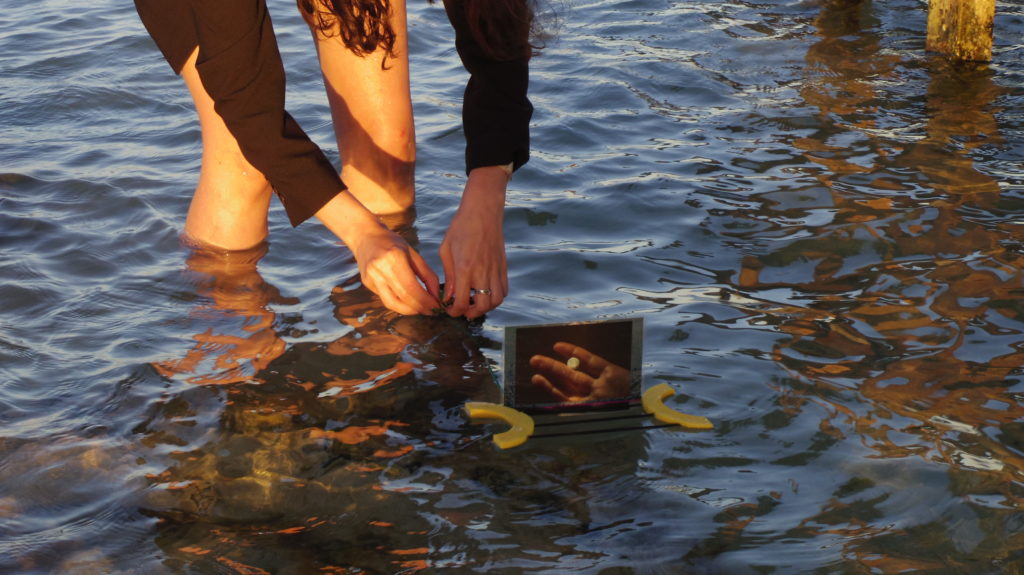Biennale de La Biche is the smallest contemporary art biennale in the world and is taking place on a remote, uninhabited island in the Caribbean Sea bound to disappear due to the rising sea levels. Fourteen artists were invited to interpret the concept of this non-place and to develop works that will eventually decline and perish.
We asked Claudia Contu, an art critic from Milan, to interview Alex Urso and Maess Anand, both Warsaw based founders and curators of the project.
Claudia Contu: Hi Alex. It’s curious how much resonance the Biennale de La Biche has spread, even being seen by a very limited number of visitors. Did you and Maess Anand expect this amount of attention to the project?
Alex Urso: Whether you are an artist or a curator, when you decide make public a project, it is because you are somehow wishing to capture the attention of as many people as possible. Thus, in a certain way, the resonance achieved was intentional.
To promote the Biennale, we contacted several very influential art magazines. We were aware that once the event would have grabbed the attention of even one of those media/press outlets, the others would have followed. And so it was; after the news was released by ArtNet and The Guardian, in a matter of time the Biennale has been mentioned in many others magazines around the world. Since then, we have been receiving press inquiries from USA, Kenia, France and China. The results are delightful, considering this was the first edition of the event.
C.C.: Why this particular and peculiar location? Why did you decided to called it biennale?
Maess Anand: It just so happened that I had plans to visit Guadeloupe for other reasons. While exploring a map, I discovered a little inhabited island of the northwestern coast of the Island. I immediately fell in love with the idea of going and creating something in that very specific space. Working as a visual artist (www.maess.eu) I was always curious about curating an exhibition and the island with no visitors seemed a good place for such an experiment.
So, I teamed up with Alex Urso, who works as an artist (www.alexurso.com) and as well curator and art critic in Warsaw. In a couple of days we conceived the concept, started to contact the artists and conceptualize the practical development of this adventure.
We called our project Biennale de La Biche, alluding to the elite events such as Venice Biennale. The Biennale was constructed to be similar, however obviously different as an alternative experimental way to present art.
C.C.: Could you tell me who are the artists and you arranged the organization together with them?
Maess Anand: We invited emerging artists born in late 70s and 80s. Some having wildly impressive exhibition history, others waiting to be discovered. Each of us came up with our own list and we converged to make the final selection. It was an eye opening experience to introduce new names to each other; since we both are based in Warsaw there is strong presence of Polish artists: such as Karolina Bielawska, Norbert Delman, Michał Frydrych, Łukasz Ratz, Aleksandra Urban, Yaelle Wisznicki Levi and Zuza Ziółkowska-Hercberg. Within a brief period, the project was developed. Our aim was to make our biennale an international event with a rich collection of international artists: from Finland, Italy, to Guadeloupe. After gathering the artworks and artist instructions, I simply packed all the artworks into a small rental motor boat and with the help of a local fishermen, installed the entire show before dawn.
C.C.: You definitely know that lots of biennials have been created since the beginning of the XXI century. Which features make this one different from the others?
Alex Urso: Biennale de La Biche, in some way, is more of an anti-biennial. All the works had been installed in the restricted yet authentic facilities of the island: submerged, drenched by rain, ruined by time, each artwork is destined ultimately to perish in the space. Additionally the number of visitors is very low due to the geographical isolation of the island. Everything existed only in a sort of poetical and symbolic dimension.
In retrospect, rather than the pieces featured in the exhibition, is the biennial itself the real artwork: an event made by the partnership of two curators and fourteen artists that together decided to risk and claim attention, creating an art project on a place distant from all the limits and conventions of the contemporary art system. The Biennale is a breath, out of the contemporary art scene.
C.C.: The most interesting thing about the concept is that the artworks are staying on the island until their physical deterioration, or until they disappear. Hans Ulrich Obrist once interviewed Eric Obsbawn, who shared with him the idea of a “protest against forgetting”.This protest is needed in a modern society because we often forget and gradually lose our memory. I think Biennale de La Biche shares something with the Obsbawn’s statement.
Maess Anand: I agree, Hans Ulrich Obrist in the same interview stated that memory is a profoundly dynamic process in the brain; memory is not a static archive, it is a process.
It is symptomatic that one quarter of artists of Biennale have chosen to reflect on memory in their works.
For example Alex Urso displayed an objet trouvé, a family photo (unknown to the artist) that was taken before the second world war. Zuza Ziołkowska-Hercberg’s work “Untitled”, consisting of a wooden box with ash, plexi glass and stained glass paint, is also about memory and perception.
According to the artist we carry the remains of the past. Our condition is diffused with filters where everything can be discerned in ashes.
Also, Biennale itself became a memory, a talking about it became a sort of travel literature storytelling. As we had a very modest number of people who actually visited the island, the Biennale exists in people’s minds because of memories and documentation being presented here. It relies on the rapport of what the storytelling subject experienced in the island, but even striving to be as objective as possible, the story is formed and filtered…which is very human.
C.C.: Are you ready for 2019?
Maess Anand: Nothing is certain but we somehow hope to organize the second edition of the Biennale de La Biche in 2019. Having reasonable time to develop a new program, we thought about focusing more on artists from Guadeloupe and the Caribbean.
Alex Urso: About the next episode of the biennale, we have no expectations, because it is possible that the island in two years will be already totally inaccessible. The term “biennial” is taken more as a starting point, that designates a continuity, something that will most likely develop in the future, but is not decided yet in which direction.
C.C.: Thank you for speaking to us.
Interviewed by Claudia Contu.
Read more about the Biennale de La Biche
 Alex Urso |
 Maess Ananad |
Claudia Contu (b. 1993) is a critic and curator living and working in Milan. She’s currently finishing her studies in Economics and Management of Museums and Exhibition Events. She writes about art for That’s Contemporary, ArteFuse and FormeUniche.

Biennale de La Biche,

Biennale de La Biche











